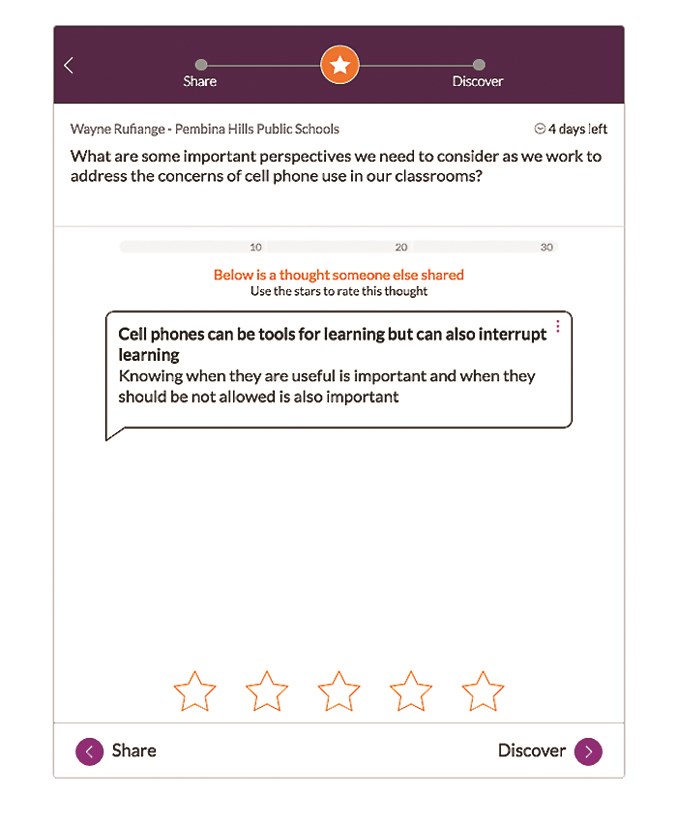 R.F. Staples School is asking students, staff, parents and the community for its opinion on whether students should be allowed to have their cellphones in class.
R.F. Staples School is asking students, staff, parents and the community for its opinion on whether students should be allowed to have their cellphones in class.
R.F. Staples School students, staff, parents and even the community at large are being asked for their opinion on whether kids should be allowed to bring their cellphones into class.
Running until 9 p.m. May 8, the confidential online survey may potentially guide the school on creating an overarching cellphone policy, said principal Wayne Rufiange.
In September the school banned junior high students from bringing cellphones into class, while at the high school, teachers decide whether or not kids are allowed to bring their phones in. Pembina Hills Public School doesn’t have a classroom cellphone policy, while nationally Ontario will ban cellphones in all classrooms — with some exceptions — starting this September.
“It’s an ongoing issue with our students as to how much of an education benefit is it, or is it more of a distraction. Where’s the line? And it seems to shift quite regularly,” said Rufiange.
“Right now we’ve left it up to individual (high school) teachers so it’s their personal classroom management. But at the same time I think as the principal I do have a responsibility to set some standards and look at the bigger picture. I think bottom line is that we’re an educational institution and there is an expectation that your focus is on the task at hand, whether that’s mechanics, carpentry or math and English. So how do we set the kids up for success?”
Although Rufiange knows some junior high kids have flaunted the ban, they’ve witnessed a drop in social media issues brought to staff.
“I know our school counsellors have reported a lot less incidents of having to deal with kids upset with social media in our junior high because for most of the day they don’t have their phones. They’re more focused on their classes.
“I think overall there has been some success in the junior high and so is this something we want to continue in high school? Or is there a better way than just making a blanket rule? That’s why we’re getting feedback from as many people as possible.”
Hosted at www.thoughtexchange.com (the code to enter the discussion is 823-163-102), participants are prompted on whether they’re a student, teacher, parent or community member. Following, 10 questions are listed and range from, “What does responsible cellphone use look like?” to “When do cellphones help learning or interrupt learning?”
Rufiange said the questions are meant to create discussion and not lead respondents down a path. People can also go to R.F. Staples School’s website and follow the appropriate links to participate.
“People can put as many thoughts as they want in whatever format they feel gets their idea across. Once the thoughts are on there the program then categorizes some of the responses and sends the thoughts back to you and that person can star them,” he explained. “So five stars would be a great idea, one star wouldn’t be the top of the list, or you can just skip it because you don’t want to rate it.”
Once the survey wraps the program compiles a report so they can see what people are thinking. The only way they’re separating the data, Rufiange noted, is whether it came from students, staff, parents or community members.
“If we’re engaging people it’s important to get perspective. The more we have the better.”
The survey went live April 29 and by noon they had already had 138 participants with 186 thoughts, while respondents had placed 3,400 stars across the different thoughts.
“I’m hoping we get 1,000 participants when you include the students and their families plus our staff and the community,” said Rufiange.



